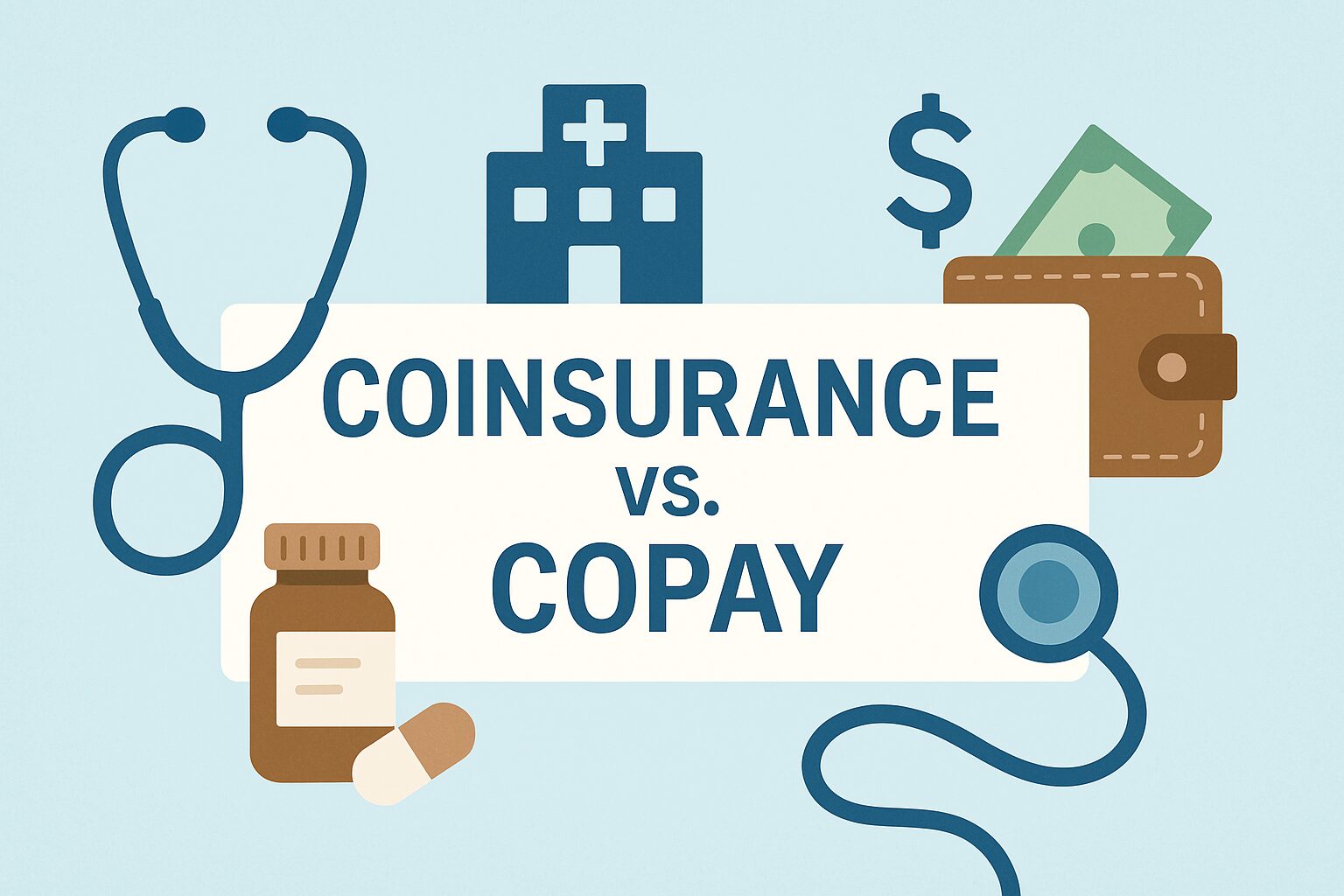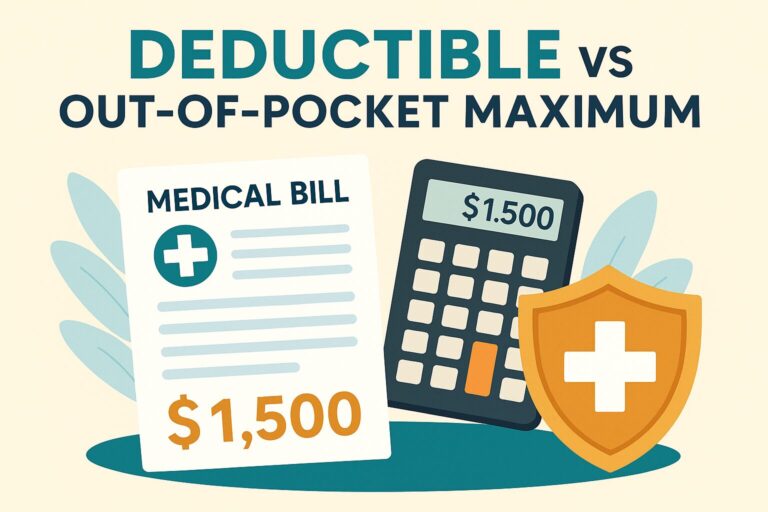Coinsurance vs. Copay: What’s the Difference?
Introduction
Medical costs are one of the largest expenses you’ll face in your lifetime, and health insurance is essential to help bring those costs down. But to make the most of your coverage, you need to understand the “moving parts” that determine what you’ll pay out of pocket.
Two terms that often cause confusion are copay and coinsurance. Both involve cost-sharing between you and your insurance provider, but they work in very different ways. By the end of this post, you’ll know the difference—and which one might suit your needs best.
What Is a Copay?
A copay is a fixed fee you pay directly to a healthcare provider at the time of service. This amount is clearly stated in your plan documents, so it’s easy to budget for ahead of time.
Examples of copays include:
- Doctor visit copay
- Prescription drug copay (not always included)
- Specialist copay
- ER copay
💡 Budgeting tip: If you know you have an appointment or prescription refill, you can plan your budget with confidence because your cost won’t change.
What Is Coinsurance?
Coinsurance is the percentage of a medical bill you’re responsible for after meeting your deductible. The insurance company covers the rest. Coinsurance typically ranges from 10%–30%, with 20% being the most common.
Example:
- A physical therapy session costs $100.
- Your plan has 80/20 coinsurance.
- You pay $20, your insurer pays $80.
Unlike copays, coinsurance costs are variable because they depend on the total price of the service. That makes them less predictable and harder to budget for.
Key Differences: Copay vs. Coinsurance
| Feature | Copay | Coinsurance |
| Definition | Fixed dollar amount for a covered service | Percentage of the cost you pay for a covered service |
| When You Pay | At the time of service (e.g., doctor visit, prescription pickup) | After your deductible is met |
| Amount | Predictable (e.g., $20 for a doctor visit) | Variable (e.g., 20% of a $1,000 MRI = $200) |
| Budgeting Impact | Easier to plan, flat costs | Harder to predict, depends on service cost |
| Common Uses | Primary care, urgent care, prescriptions | Hospital stays, surgeries, diagnostic tests |
| Best For | People who want stability in healthcare costs | People who don’t expect frequent, high-cost services |
Which One Is Better for You?
It depends on your medical needs:
- Copay-heavy plans work best if you visit doctors often or rely on prescriptions—you’ll know exactly what each visit will cost.
- Coinsurance-heavy plans can be cheaper if you rarely need care, but the costs can spike quickly if an unexpected procedure comes up.
👉 Bottom line: copays = predictability, coinsurance = flexibility (with more risk).
Where to Find These Details in Your Plan
Check your Summary of Benefits and Coverage (SBC). The copay schedule and coinsurance rates are usually in the table on the first few pages, with more detail later in the document.
⚠️ Be sure to read carefully: some services may use copays, while others use coinsurance after the deductible. Always know what you’re signing up for before paying premiums.
Conclusion
A copay is a fixed amount you pay at the time of service, while coinsurance is a percentage of the bill you share with your insurer after your deductible. Copays are easier to budget for, but coinsurance can save money on premiums if you’re generally healthy and don’t expect frequent care.
Before open enrollment, review your plan to see whether copays or coinsurance fit your healthcare and financial situation better.
To explore this concept further, visit our main taxes and insurance page.






